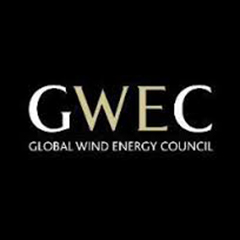The Global Wind Energy Council has just released its latest publication – the Global Wind Energy Outlook. The report outlines scenarios where wind could supply 20% of global electricity by 2030, and looks at four scenarios exploring the future of the wind industry out to 2020, 2030 and 2050.
By 2030 wind power could reach 2,110 GW, and supply up to 20% of global electricity, creating 2.4 million new jobs and reducing CO2 emissions by more than 3.3 billion tonnes per year, and attract annual investment of about €200 billion.
“Wind power is the most competitive option for adding new capacity to the grid in a growing number of markets,” states Steve Sawyer, Secretary General of Global Wind Energy Council. “but if the Paris agreement targets are to be reached, that means closing fossil fuel fired power plants and replacing them with wind, solar, hydro, geothermal and biomass”.
The new report examines the International Energy Agency’s central scenario from its World Energy Outlook, the New Policies Scenario, and is compared with the IEA’s 450 Scenario, the GWEC Moderate Scenario and the GWEC Advanced Scenario. The results show how the global wind industry will deliver in terms of global electricity supply, CO2 emissions savings, employment, cost reductions, and investment. These four supply-side scenarios are then compared with two different scenarios for the development of electricity demand.
To view the full Press Release, click here.
To download the report, click here.
[if gte vml 1]><v:shape id=”_x0000_s1028″ type=”#_x0000_t75″ alt=”” href=”http://r20.rs6.net/tn.jsp?f=001-tmpec4XuFe3m4tQj22ZLK_NxV2bqp219pW2TUule7qNx0ouDApkYfyBpsg8kyZTZ2PPZHw6op0qHuB20F81FhVBvxGvrroWwvS9CQHrdML4G4yLl5k7T4ZdKO5vECq1Oke6nJ4IfvGnvKGnKDU2_lNW5Fhh0-nZU-oUg_dSLWA=&c=0QMWexJhp9K9sIH9JiRfYhd1BVtjxcUzcWXDhx1O__xCzDOms27a7Q==&ch=ihNqhc0L0qYfs_fZDImX0LPQCHPN9RQ8KIu_IYpLdz_QxpkHuKyNYw==” target=”"_blank"” style=’position:absolute;margin-left:16.3pt; margin-top:0;width:67.5pt;height:53.25pt;z-index:251660288; mso-wrap-distance-left:3.75pt;mso-wrap-distance-top:3.75pt; mso-wrap-distance-right:3.75pt;mso-wrap-distance-bottom:3.75pt; mso-position-horizontal:right;mso-position-horizontal-relative:text; mso-position-vertical-relative:line’ o_allowoverlap=”f” o_button=”t”> <v:imagedata src=”http://files.constantcontact.com/1cca7ecc001/f97fc6ed-bfb7-4b99-92b3-3f134a103d96.png” /> <w:wrap type=”square”/> </v:shape><![endif][if !vml]
[endif]
A webcast outlining the findings of the report will take place on 24 October at 15h CEST featuring Steve Sawyer and the report’s lead analyst, Dr Sven Teske, Research Principal at Institute for Sustainable Futures.
Free registration at http://goo.gl/ltzz20




























